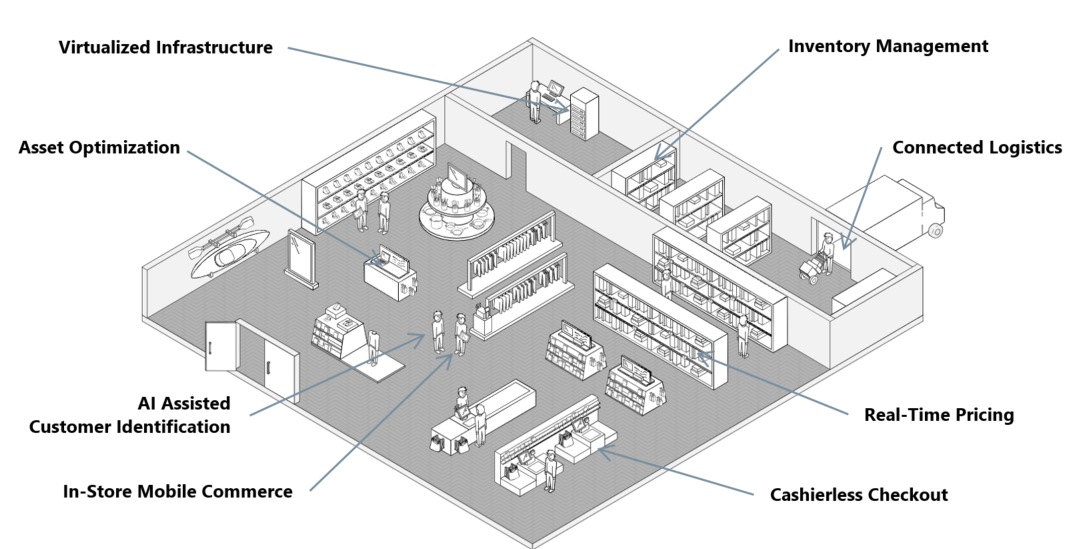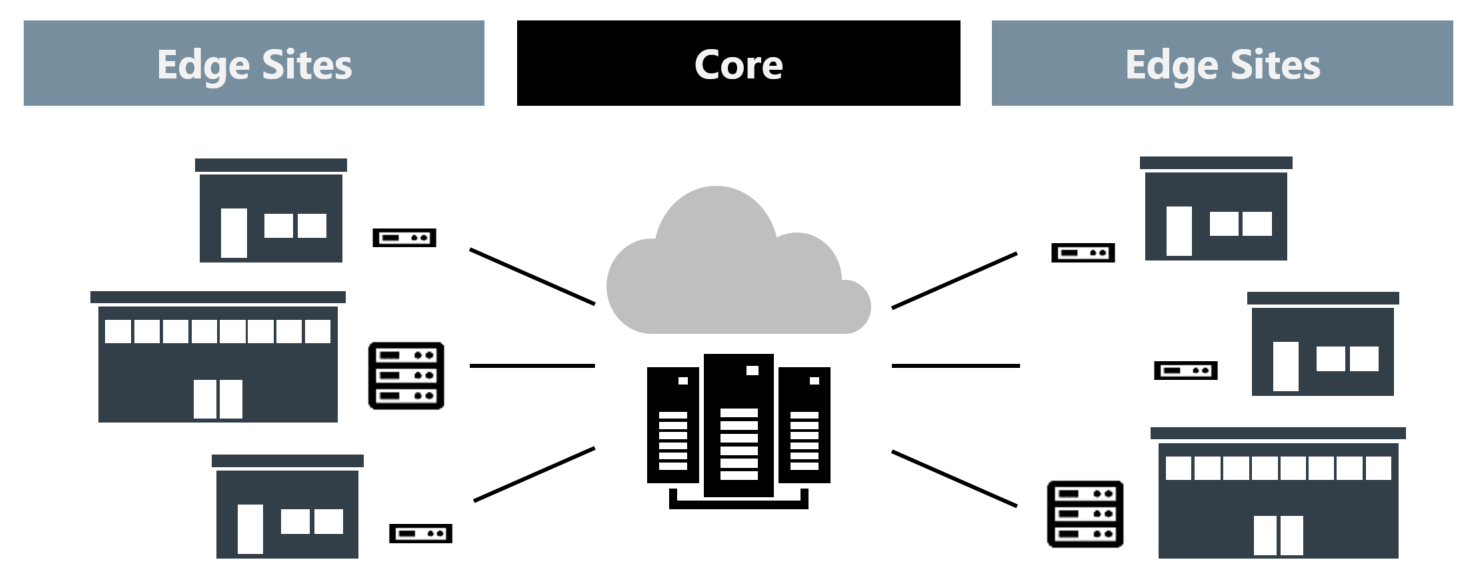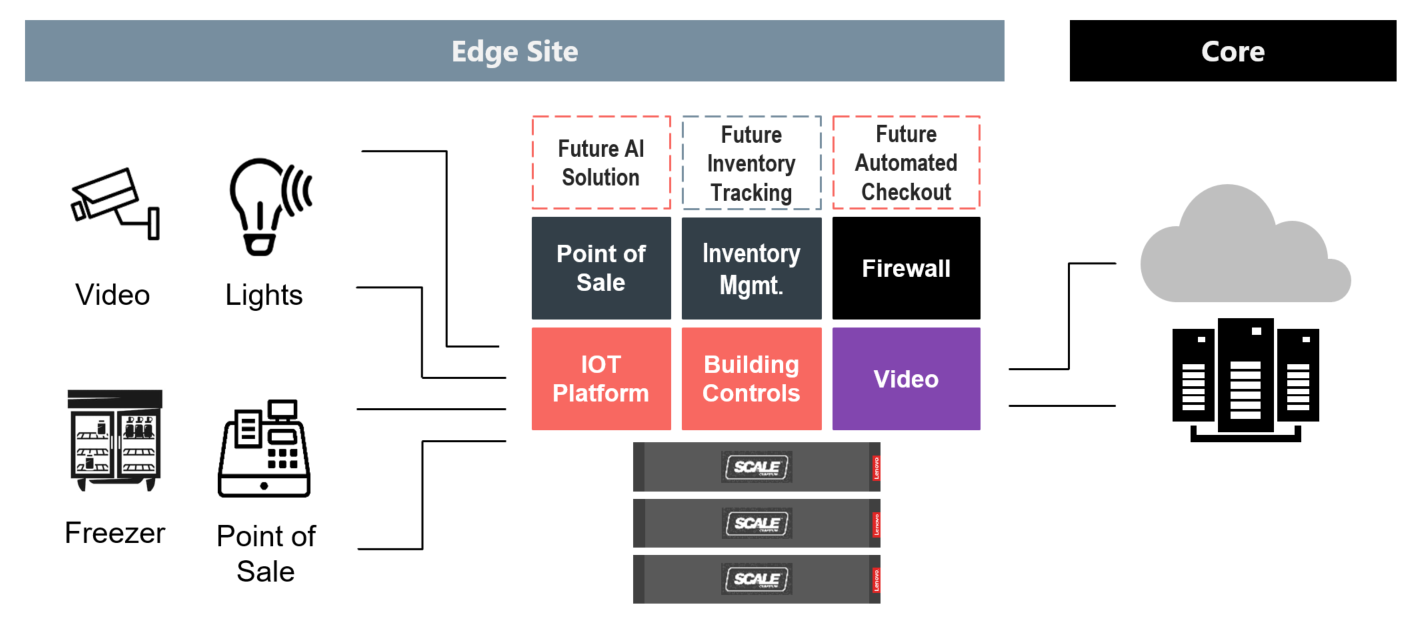Retailers realize that in order to stay competitive, they need to transform. They are facing thinning margins, increased competition from on-line commerce, and shifting customer loyalty. Sites need to become more efficient, minimize waste, and use automation to free up staff allowing them to focus on customer service.
Today’s customers are looking for more than just the traditional buying experience. They want to be catered to and engaged on a more personal level. They want access to more choices and more conveniences. They expect to be able to access those options in different ways, either at the store, at home or on the go. Businesses can use this data to track customer preferences and analyze buying trends to provide new services and a more personalized shopping experience which will lead to revenue growth.
By monitoring assets, businesses can react to system failures immediately, minimizing disruption to their business to prevent revenue loss. Automation and predictive maintenance solutions can drive efficiency in order to lower costs.
A Future-ready Store Infrastructure solution which combines Edge virtualization with IoT platforms can be the foundation of a retailer’s intelligent transformation.

Retail Intelligent Transformation Use Cases
IoT and transformative technologies enable brick-and-mortar retail operations to increase productivity and efficiency, enable automation, and offer new services. Initiatives such as interactive selling, real-time pricing, and in-store promotion help drive increased revenue and deeper customer engagement. And unified store operations and efficient supply chain initiatives can positively impact operational efficiency and your bottom line.
Cashierless Checkout
Automate and streamline checkout experience improving customer satisfaction and freeing employees to focus on higher value add services.
Asset Optimization
Real-time tracking of critical infrastructure such as freezers, A/C systems, power, lighting, and plumbing system keep business running and optimizes costs.
Connected Logistics
By linking systems together, retailers can better optimize operations, improve customer experience and reduce costs.
AI Assisted Customer Identification
Identification of customers lets retailers offer personalized marketing to drive greater revenue and higher customer satisfaction.
Virtualized Infrastructure
VMs, containers, shared storage, and centralized remote management can all reduce downtime and minimize the need for onsite IT support.
In-Store Mobile Commerce
Mobile checkout, scanning items to get further information, and even buy ahead with pickup without the need to wait in line (via pick-up lockers).
Real-Time Pricing
In conjunction with inventory management, real time pricing can reduce spoilage, increase margins and allow individual promotional pricing.
Inventory Management
Real-time inventory management allows retailers to optimize stock levels, automate product ordering, and react quicker to changes in demand.
Retail Infrastructure Implementation Challenges
As retailers look to update infrastructure and capture the benefits of intelligent transformation, they face numerous challenges. IT resources are often primarily devoted to maintaining aging infrastructure, leaving little time to implement new applications.
Existing Edge sites often utilize discrete systems running a single operational application (point of sale, equipment monitoring, inventory management, building controls, video surveillance, etc.). This leads to data silos which hinder advancements in operational efficiency, functional collaboration, and creation of new services.
Most retailers run on tight margins, so any solution has to provide cost savings and a strong return on investment in order to gain consideration. They need a solution that can be optimized for each individual location, whether it be a flagship store or a smaller site in a more remote, rural area.
Deployment Best Practices
Site Compute Needs Vary
Replicating a data center platform stack on a smaller scale can lead to unnecessary software licensing and hardware costs. Complex system design means more cost to purchase, more cost to support, and more risk to the business.
Properly Sizing a Solution
Retailers are forced to buy a one-size-fits-all solution, and try to roll it out across all their locations. That means some locations can end up with too much solution, while others can end up with too little. Getting a solution that is uniform, yet configurable for location needs, and allows nondisruptive growth is the optimal solution.
Deployment is Expensive and Time Consuming
For an organization with 100s or even 1000s of locations, just physically getting to all the locations becomes a challenge. It takes time and is costly to send a technician to every site to add new services.
Cost
Margins are top priority so solutions must provide a strong return on investment, which is often difficult to predict with disruptive technologies.
Security
Given the volume of data shared over networks between central and remote locations, minimizing network intrusions and breaches is essential. Retailers need to ensure that remote sites have secure connectivity, up-to-date firewalls, antivirus, and patches.
Data Storage and Backup
Data at remote locations needs to be backed up frequently, particularly if the information is critical to the business. Managing remote site backup and failover can be costly and time consuming.
Manageability and Monitoring
Systems need the ability to be remotely managed both individually and in aggregate to reduce costs and ensure uptime. Support services should be tied into system management consoles for quick resolution to failures.
Lack of IT Expertise at Sites
Most remote retail locations do not have local IT support. The staff is not expert in different hardware, operating systems or applications. Highly specialized systems require a high level of expertise, which isn’t available.
Lenovo and Scale Computing's HC3 Edge Retail Infrastructure Solution
A typical architecture includes remote locations of different sizes with varying compute needs. These Edge sites are connected to core business services and databases located in a data center or public cloud.

Business applications, IT applications, operational technology platforms, and IoT platforms run on top of the virtualized Edge cluster. Future transformative business applications can be easily added and updated remotely. Multiple Edge clusters can be managed in aggregate through a web interface.

The Lenovo and Scale Computing Solution
In order to meet the variety of challenges retailers will face to update their Edge/remote infrastructure, Lenovo has partnered with Scale Computing to provide a solution that can meet their needs today and tomorrow. Scale Computing HC3 Edge software and Lenovo’s award-winning ThinkSystem servers and networking are ideal for retail sites because they encapsulate the simplicity, scalability, and availability that reduce infrastructure management footprint.
By providing a simple virtualized solution Edge locations can run both their traditional IT and OT applications along with their new transformative IoT applications on a common infrastructure solution. This reduces cost, simplifies management, and allows retailers to test and quickly deploy new services and applications. The solution can be deployed as either a standard three-node cluster, or for even smaller situations a single node. Systems can be remotely managed through a single web interface that allows an administrator visibility into hardware and software components including hypervisor and individual VM consoles.
Benefits of a Lenovo and Scale Computing Solution
Easy to deploy: Systems can be installed and cabled in minutes, virtual machines created in under an hour without specialized training.
Lower total cost of ownership: The HC3 Edge software includes the hypervisor, so there are no additional licensing costs associated with a separate hypervisor. Backup and recovery are also included.
Highly resilient: The architecture is built with layers of redundancy. Intelligent automation handles drive failures and node failures, redistributing data across remaining drives and VMs across remaining nodes. This ensures you stay up and running.
Simplified management: Administrators can quickly connect their web browsers to remote systems and manage storage and virtual machines from a single management interface, allowing updates to be handled remotely and ensure timely deployment.
Easy to expand and update: Adding another node to the solution is simple. Just install, cable, power up and assign an IP address and the node is seamlessly absorbed into the cluster. Software/firmware updates come directly to the web interface, where a single click allows them to be installed.
A single common hardware platform: Run all your applications from point of sale, building management, security applications, inventory management, asset management, etc., as well as your back office applications, and new IoT applications without the need for multiple systems, lowering costs and simplifying management.
For More Information
To learn more about the Future-Ready Store Infrastructure solution, contact your Lenovo representative or Business Partner.
lenovo.com/systems/storage
lenovo.com/systems/services
Related product families
Product families related to this document are the following:
© 2025 Lenovo. All rights reserved.
Availability: Offers, prices, specifications and availability may change without notice. Lenovo is not responsible for photographic or typographic errors. Warranty: For a copy of applicable warranties, write to: Lenovo Warranty Information, 1009 Think Place, Morrisville, NC, 27560. Lenovo makes no representation or warranty regarding third-party products or services.
Trademarks: Lenovo, the Lenovo logo, ThinkSystem® are trademarks or registered trademarks of Lenovo. Other company, product, or service names may be trademarks or service marks of others.
Document number DS0080, published February 21, 2019. For the latest version, go to lenovopress.lenovo.com/ds0080.


